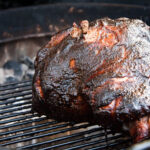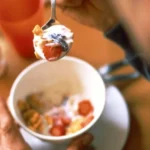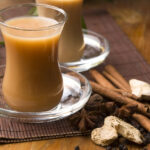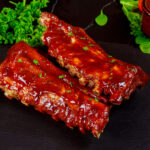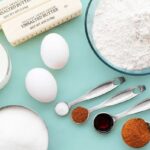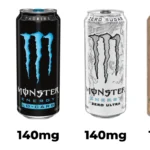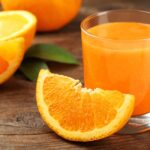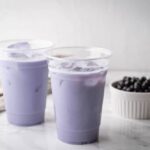Are you looking to measure out 30mls of a certain ingredient or item, but don’t have access to a measuring device? It can be difficult to figure out exact measurements without the right tools. Fortunately, it’s easy to calculate How Many Teaspoons In 30 Ml so that your recipes and concoctions will always turn out perfectly each time. In this blog post, we’ll explain exactly how many teaspoons are in 30 ml so you can easily get back on track with your baking and cooking endeavors.
Contents
Definition of teaspoons?
A teaspoon is a small spoon typically used for stirring, mixing and measuring ingredients in cooking and baking. It’s found in nearly all kitchens around the world and plays an important role in many recipes. The size of a teaspoon varies depending on where you are located, but they generally hold 5 ml (or 0.17 oz) of liquid or powder.
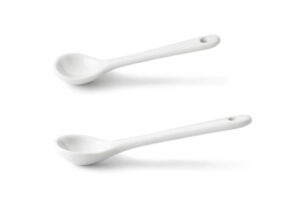
Definition of milliliters?
A milliliter (or ml) is a unit of volume. It is equivalent to 0.001 liters and can be used to measure liquids, powders, or even small amounts of solids.
Why do we need to learn about it?
Knowing How Many Teaspoons In 30 Ml can be very helpful when it comes to cooking and baking. It helps you accurately measure ingredients so that your recipes will turn out exactly as desired. Additionally, this knowledge can also come in handy if you’re ever stuck without a measuring device.
Conversion rates between tablespoons and milliliters
1 teaspoon = 5 ml
1 tablespoon = 15 ml
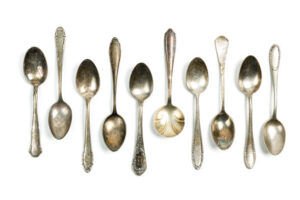
Importance of understanding conversion rates
Understanding How Many Teaspoons In 30 Ml and the conversion rate between teaspoons, tablespoons and milliliters is important when it comes to measuring out ingredients accurately. Without this knowledge, your recipes and concoctions may not turn out as desired.
How many ml In a teaspoon?
The answer is 5 ml. 1 teaspoon is equivalent to 5 milliliters (mL) of volume. To convert teaspoons to milliliters, multiply the number of teaspoons by 5. For example, 2 teaspoons would be 10 mL, and 3 teaspoons would be 15 mL. Teaspoons should not be confused with tablespoons, as a tablespoon is three times larger than a teaspoon. A tablespoon is equivalent to 15 mL, so 3 teaspoons would equal 1 tablespoon (15 mL). When measuring small amounts of liquid, it is important to use the correct measurements for accuracy. Knowing how many ml are in a teaspoon will help ensure that you have the right amount of liquid every time.
How many tablespoons in 30 ml?
30 ml is equal to 2 tablespoons.
How to convert ml to tablespoons?
To convert ml to tablespoons, divide the amount of milliliters by 15.
Factors that affect the accuracy of the conversion
When it comes to converting between ml and teaspoons or tablespoons, there are several factors that can affect the accuracy of the conversion. These include:
– The type of spoon being used (teaspoon vs tablespoon)
– How full the spoon is when measuring out ingredients
– How accurate your measurements are
Common uses of 30 ml measurement in teaspoons
30 ml is often used in recipes to measure out small amounts of ingredients, such as spices or extracts. It can also be used when measuring out liquids, such as milk or juice. Additionally, 30 ml can be used as a starting point for measuring other ingredients that require larger measurements (such as cups).
Some common ml conversions
– 1 teaspoon = 5 ml
– 1 tablespoon = 15 ml
– 30 ml = 2 tablespoons
Tips for converting accurately and quickly
When it comes to converting between ml and teaspoons or tablespoons, accuracy is key. Here are a few tips that can help you convert quickly and accurately:
– Use the same teaspoon or tablespoon every time you measure out ingredients.
– Be sure to fill the spoon completely when measuring liquids or powders.
– When measuring solids, try to use a spoon that has been leveled off.
– Take the time to double check your measurements before adding the ingredients to your recipe.
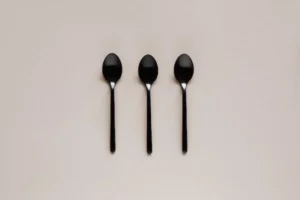
Conclusion: How Many Teaspoons In 30 Ml?
Knowing how many teaspoons are in 30 ml is a useful skill to have in the kitchen. By understanding the conversion rates between teaspoons, tablespoons and milliliters, you can ensure your recipes will turn out perfectly every time. Use this blog post as a guide when converting accurately and quickly between these units of measurement.
Related posts: how many drops in 1 ml
FAQ: Teaspoons in 30 ml
How many teaspoons are in 30 ml?
It is important to note that 30 milliliters equates to 6 teaspoons.
Can you convert 30 ml to teaspoons?
Six teaspoons is the equivalent of 30 ml.
How many teaspoons are in 30 milliliters?
Did you know that 30 milliliters is equivalent to 6 teaspoons? Brush up on your measuring units with this helpful fact.
How many teaspoons are in 30 liters?
Did you know that 30 liters hold a whopping 6,000 teaspoons? That’s right, a kitchen essential that often goes unnoticed, but incredibly useful when it comes to measuring ingredients.
What is the equivalent of 30 ml in teaspoons?
Did you know that 30 ml is the same as 6 teaspoons? Knowing this conversion can come in handy for cooking and baking.
How many teaspoons are needed to equal 30 ml?
To achieve an equivalent of 30 ml, 6 teaspoons are required.
How many teaspoons are in a 30 ml measuring cup?
One 30 ml measuring cup contains six teaspoons of liquid.
How many teaspoons are in a tablespoon of 30 ml?
A tablespoon, containing 30 ml, contains exactly 2 teaspoons.
How many teaspoons are in half of 30 ml?
Half of 30 ml equals 3 teaspoons.
How many teaspoons are in a third of 30 ml?
One third of a 30 ml measurement is equivalent to 2 teaspoons.
How many teaspoons are in a quarter of 30 ml?
A quarter of 30 ml equates to 1.5 teaspoons.
How many teaspoons are in one ounce or 30 ml?
In a single ounce or 30 ml, you’ll find six teaspoons.

Chef Yong Kang has over 20 years of experience cooking in the finest restaurants, and is excited to present their vision to you and all our guests. Our caring and committed staff will ensure you have a fantastic experience with us.
We are also available for private events:, business lunches, dinners, and more. We would love to discuss how to be a part of your next event.Our restaurant refuses to compromise on quality, which is why we source our fresh ingredients from local farmers’ markets.


